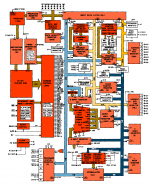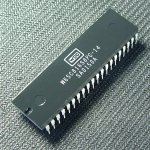ade
Est. Contributor
- Messages
- 2,962
- Role
- Other
I'm guessing that you're a couple/few years younger than me (52, here)?abrich said:Even in secondary school, all we had were lessons in how to use a word processor, spreadsheet and database, but we didn't get into the nuts and bolts of how a computer works, and I don't think we had any idea of what 'Computer Science' really was… We messed around in BASIC, but that was it. I'm pleased to hear that things have improved for young people today though.
We did the whole middle-to-upper school malarkey and the transition from middle to upper school came about the time that our lot got computers and Computer Sciences was a study option.
It was a bit of an odd affair, with the computer room being stashed away in what was little more than a storage room with no windows (
The study was all the nuts and bolts of programming, no tuition in the workplace applications/software which were becoming common in big companies, so it was limited and limiting for the average kid.
Just thinking, then: I don't think I saw an Excel spreadsheet until 2000, when I got my first PC and it's software bundle. And most computer screens that I'd seen outside of fancy offices were green-screen upto 2000!
I remember in 97 that the DC I was working in (a big concern; I was there for the xmas push) was still using the same computerized stock control software and hardware (green-screens) as the place where I began working, in 86/87.
Anyway, I thought the whole Computer Sciences study had been abandoned no long after I'd dropped it, but it seemed that those couple with BBC Micros were still at it.
I'm guessing that aims and methods must've changed with the introduction of GCSEs?
Last edited:



